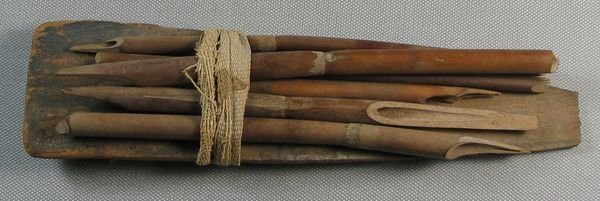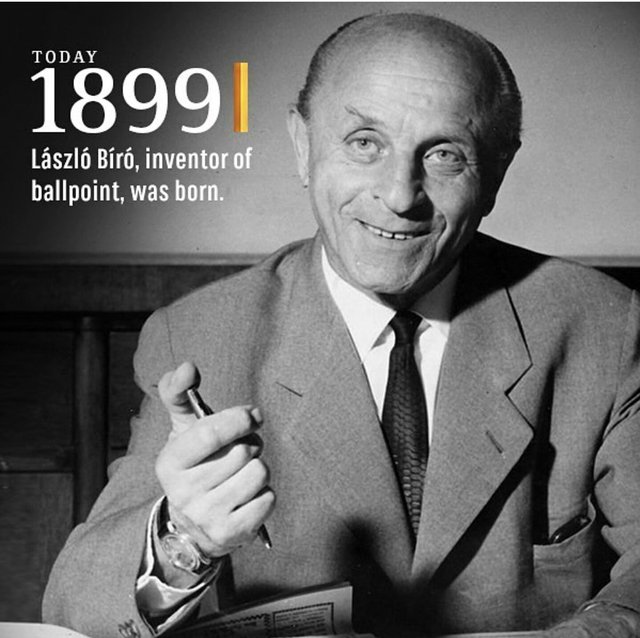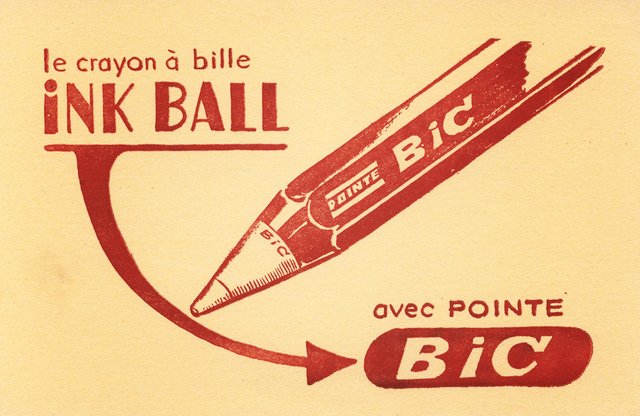
The discovery of writing proved to be of enormous importance in the advancement of human civilization. But writing was always dependent on one thing: an instrument to accomplish it.
Pens are one of my favorite things in the whole world. Being a professional writer has given me the privilege of receiving many pens and notebooks as gifts. And nothing makes me happier than writing on a piece of paper, although, I’m quite comfortable with writing on computer. However, the true fun of writing something comes with the ‘old way’. And today, I’m going to share my knowledge about the origin history of pen.
The Sumerians, around the year 3500 BC, used cuneiform writing through the use of wedge-shaped wooden or bone objects.
Already the Egyptians, creators of papyrus, used bones wet in vegetal ink from ~ 2500 BC.

[ancient Egyptian pens] source
During most of the Middle Age,s the most commonly used instrument for writing was made of simple feathers carved from birds, (usually of goose). Of course, something so organic deteriorated rapidly, so it became necessary to find more durable alternatives.
There are references to attempts to create "feathers" of metal around the fifteenth century but until the eighteenth century it was not possible to massify its use due to its weight and the difficulty of manufacturing in sufficient quantities.
It was only with the invention of steel, around the nineteenth century, that it was possible to create something for the majority of the population: the metallic nibs. Even so, its tip suffered a relatively rapid wear and the fact of having to use an inkpot was not practical for the mobility of the businessmen.

Thus, during the nineteenth century, an attempt was made to develop a writing tool that would keep the ink inside. It was Lewis Edson Waterman who was able to patent this invention in the year 1884. He had come the first pen, which we still today call the fountain pen, or permanent ink pen.
However, there is a theory that although, Waterman was the first to patent it, the fountain pen was already invented thousands of years ago by Egyptians . Let me quote from wikipedia :
"The earliest historical record of a reservoir pen dates back to the 10th century. In 953, Ma'ād al-Mu'izz, the caliph of Egypt, demanded a pen which would not stain his hands or clothes, and was provided with a pen which held ink in a reservoir and delivered it to the nib, and could be held upside-down without leaking, as recorded by Qadi al-Nu'man al-Tamimi (d. 974) in his Kitab al-Majalis wa 'l-musayardt. No details of the construction or mechanism of operation of this pen are known and no examples have survived.
One thousand years ago, the unknown inventor said:
"We wish to construct a pen which can be used for writing without having recourse to an ink-holder and whose ink will be contained inside it. A person can fill it with ink and write whatever he likes. The writer can put it in his sleeve or anywhere he wishes and it will not stain nor will any drop of ink leak out of it. The ink will flow only when there is an intention to write. We are unaware of anyone previously ever constructing (a pen such as this) and an indication of ‘penetrating wisdom’ to whoever contemplates it and realises its exact significance and purpose’. I exclaimed, ‘Is this possible?’ He replied, ‘It is possible if God so wills'."
Be that as it may, Lewis Waterman founded his own company and started selling his pens in a cigar shop and gave a five-year guarantee to each!
However, the fountain pens had a problem that prevented them from being carried in the planes of the time. Since the system invented by Lewis Waterman consisted of using atmospheric pressure to keep the ink inside the pen at a constant pressure, and as the planes were not pressurized at first, the ink began to emerge from the reservoir as atmospheric pressure subsided.

source
The following developments from Hungary had solved this problem. László József Bíró was a Hungarian journalist and was the inventor of the ballpoint pen, using a concept patented by John J. Loud in 1888, but never used commercially.
As a journalist, he soon realized that the ink used in the printing of the newspapers dried immediately and did not smear, contrary to the one used in the fountain pens.
His idea was then to create a pen that gave the same result, that is, to write without applying more ink on the paper. So he decided to use a small metal sphere on the end of the pen which, as it rotated, received ink from the magazine and passed it onto the paper. It complemented its creation by covering the ink tank, which prevented the paint from drying out or spilling out. Its creation was patented in 1938, in Paris.

source
Unfortunately László Bíró did not have the financial means to produce his pen in sufficient quantity for commercialization. Therefore, in 1944, he decided to sell its patent in two countries: in the United States, to the company Eversharp-Faber and in France to French Marcel Bich.
In the United States, the ballpoint pen did not have great success, much due to the huge cost of it for the height, about 10 dollars, selling only 10,000 units at its launch.
In Europe, on the other hand, the first ballpoint pens were launched on the market in 1949, with the designation "Bic pen", which was an abbreviation of the surname of Marcel Bich. Due to an affordable price, its acceptance with European consumers was good, made it an almost immediate success.

source
In 1959 the Bic pens were released in the American market and in a short time, conquered the consumers.
Today the company manufactures millions of ballpoint pens per day, supplying virtually the entire planet. (I also have used more than one bic pen)
[courtesy: wikipedia, fountainpennetwork.com, bicworld.com ]
[pic 1,2,the bottom one: pixabay]
Your post has been selected to be presented in "Steemit Bangladesh curation competition episode # 9" . If you are from Bangladesh and would like to present the article in voice hangout during the competition, Please join the hangout on discordapp
Steemit Bangladesh curation competition episode # 9
Time : 10 PM BDT
Date: 24/07/2018 (Tuesday).
Downvoting a post can decrease pending rewards and make it less visible. Common reasons:
Submit
Thanks for selecting me :) I'm really honored - and yes, I'm from BD. I've joined the discord channel :) however, by the time i saw your comment, the tine to present my content was passed. Never mind, I'll try to be more active in the coming days
Downvoting a post can decrease pending rewards and make it less visible. Common reasons:
Submit
Hello @tamurah, thank you for sharing this creative work! We just stopped by to say that you've been upvoted by the @creativecrypto magazine. The Creative Crypto is all about art on the blockchain and learning from creatives like you. Looking forward to crossing paths again soon. Steem on!
Downvoting a post can decrease pending rewards and make it less visible. Common reasons:
Submit
Thank you for your generosity :)
Downvoting a post can decrease pending rewards and make it less visible. Common reasons:
Submit